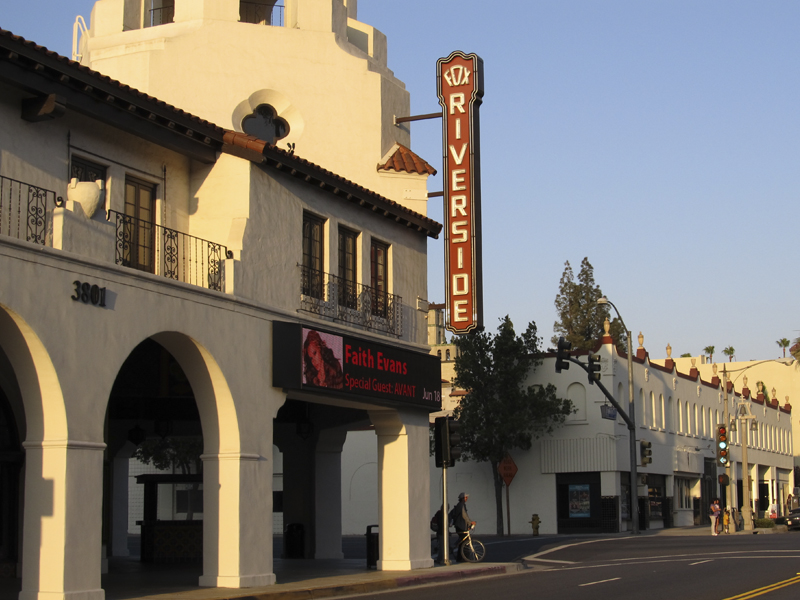
A large, magnificent sight appears in downtown Riverside that the city’s citizens and UCR students have wanted for so long: Thousands of people are flowing into the city, the streets are bustling and life is moving. All this — thanks to the city’s brand-new $50 million-plus arena.
At first glance, it seems almost too good to be true. Students have clamored for a more active downtown scene for decades. Between this proposal to build a 6,000-seat stadium for as much as $78 million and the recent partnership of the Fox Theater with Live Nation, is the city of Riverside finally taking students’ desire for a lively city into account? What artist will be playing there? Could it even draw sports teams to a venue with no major sports attractions to speak of?
But the way the city of Riverside is planning out their proposed venue, none of this will be happening. Though good intentions and ideas are at heart, there are far too many problems with implementing the proposed center. The city should stop while it’s ahead. Instead of flushing $50 million down the tubes for an ill-advised stadium, Riverside should take steps that will actually improve downtown Riverside culture.
Recently, Councilman Mike Gardner expressed support for the proposal, saying that “An arena allows a larger event than any of our facilities that we currently have.” While this is true, at least at this moment in time, Riverside doesn’t need this large of a venue. First and foremost, both attendees and potential performing artists don’t have a great reason to come here in the first place. Riverside is at the heart of the Inland Empire, and though this normally makes for convenient transport to nearby landmarks in Southern California, this also poses problems for drawing an unique array of performances to a potential stadium. An artist could choose to have a show in Los Angeles, San Diego or any one of a huge number of Orange County locations. These locations would probably be more profitable for them, and fans would likely have easier access. Riverside, as it stands, is in very little way a “destination.” For all the great history that the Mission Inn holds, it’s not enough to draw people in for a visit — and then a trip to another venue afterward.
Even if the hypothesized turnout does materialize, the city’s infrastructure renders the practical implementation of such a center difficult. The stadium is intended to seat 6,000 screaming fans — but an adjoining parking structure would only contain 1,750 parking spaces. Even if two people ride in each car, there’s still 2,500 people who need a place to park. The city would have to build additional parking structures or implement some form of alternative transportation, which themselves come with additional costs. But cars don’t just need a place to park. They also need to be able to get to the arena in the first place. Given Riverside’s cramped layout, especially in the downtown area, a significant amount of construction would have to be undertaken. Historical buildings would have to be demolished and bike lanes would give way to asphalt roads to facilitate the spike in traffic. Riverside prides itself on its history and its bold steps toward sustainability. Implementing a new arena could very well harm both of those images. And what if the projected turnout isn’t met? All that construction and all those taxpayer dollars would make Riverside seem like a shell of its former self.
In fact, Riverside is missing the point in attempting to enliven its downtown with a huge arena. Students and residents should have a reason to go downtown every weekend — even every day — not just when a big concert name is in town. Having a sports team play or bringing a big-name band to the city can initially draw people in, but they won’t want to stay unless downtown has something to offer them.
If the city wants to invest in making downtown vibrant, a good start is to focus on the small stuff. Smaller venues, similar to the Barn, could quickly develop a culture that thriving downtown areas have in spades. A comedy club here or a place for a musical performance there would do a lot to help spruce up the downtown area. It couldn’t hurt to have a bit more variety either. Opening up locally owned restaurants and shops with unique offerings hard to find elsewhere could bring something vital to a downtown where, aside from about a block or two of activity on Friday nights, is completely silent. Providing financial support for enterprising small business owners to start something new is one way the city can revitalize its downtown.
While the city’s at it, with that much money, why not invest into expanding downtown into the wasteland between the 91 underpass and UCR? The area is filled with dirt lots and cheap motels, and prevents many students from making their way downtown and spending their cash on Riverside businesses. An enormous potential for cashflow is being wasted simply because of a long trek through the Riverside desert. The city can do its part to transform that desert of questionable hotels and run-down hovels into an oasis of small businesses and interesting eateries. Once that happens, students will see that Riverside doesn’t stop at Iowa Avenue, but continues all the way to the Santa Ana River.
Riverside has its heart in the right place with the idea for a stadium. But only when Riverside has an animated downtown life will such a project be successful. Until that point, the years of construction, noise and smog will all be for nothing. If Riverside is going to spend money, it should do something to help improve the quality of life in the city — and not just make a giant empty room.








